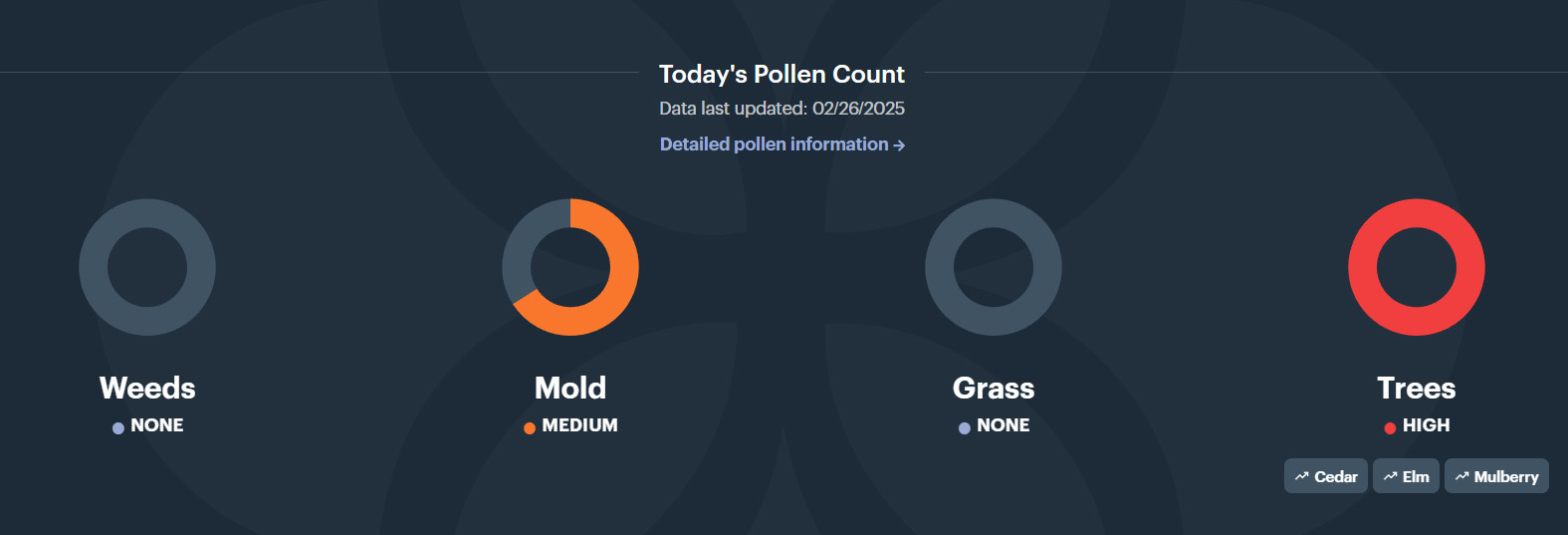 After weeks of winter weather, the final days of February bring rising temperatures and increasing pollen levels across North Carolina. Seasonal allergy sufferers will likely experience nasal congestion, itchy eyes, and sinus headaches as tree pollen levels surge.
After weeks of winter weather, the final days of February bring rising temperatures and increasing pollen levels across North Carolina. Seasonal allergy sufferers will likely experience nasal congestion, itchy eyes, and sinus headaches as tree pollen levels surge.
According to the Carolina Asthma and Allergy Center, Mecklenburg County recorded very high pollen counts, with Cedar, Elm, and Mulberry trees blooming significantly earlier than usual this year.

Tree pollen season typically starts in late February or early March and continues through April and May. Warmer temperatures accelerate this process, sending more pollen into the air as spring progresses.
Pollen season in North Carolina follows a distinct pattern:
- Tree pollen dominates from late winter to early spring.
- Grass pollen takes over in late spring and early summer.
- Weed pollen, including ragweed, peaks from late summer into fall.
To reduce exposure and manage symptoms, AAAAI experts recommend:
- Keeping windows closed at night and using air conditioning to filter allergens.
- Staying indoors during high pollen days and wearing a mask if extended outdoor exposure is unavoidable.
- Showering and changing clothes after spending time outside.
- Avoiding lawn mowing and leaf raking, which stir up pollen and mold.
- Keeping car windows closed while driving.
With tree pollen season officially underway, allergy sufferers should prepare for several months of heightened pollen exposure, with peak levels expected in April and May.


